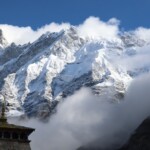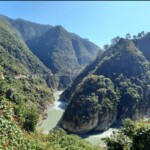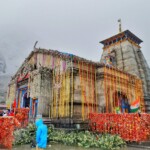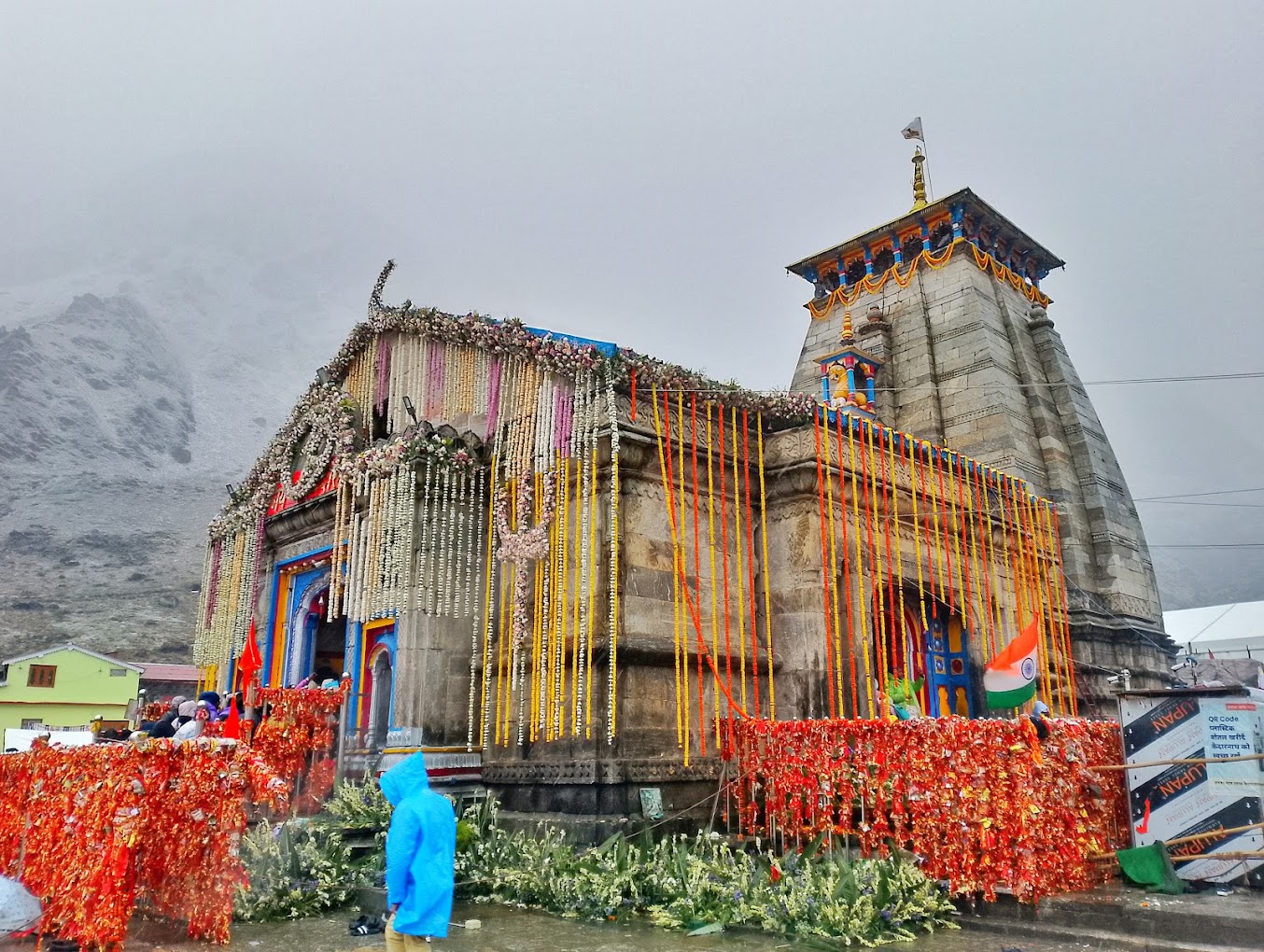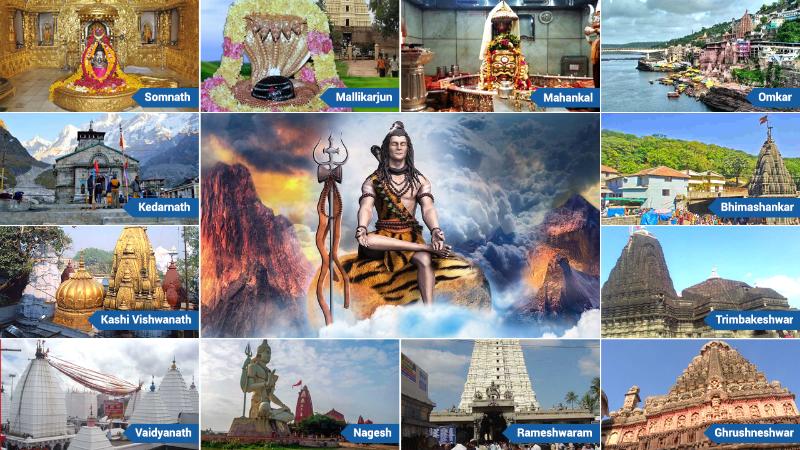
Nestled in the majestic Himalayas, Kedarnath Temple stands as a beacon of spiritual devotion and cultural heritage. For centuries, this sacred site has drawn pilgrims from all corners of the world, seeking solace, blessings, and a profound connection with the divine. we delve into the opening and closing dates of Kedarnath Temple in 2024, along with essential information for planning a pilgrimage to this revered destination.
Kedarnath Temple Opening Date 2024
| Kedarnath Temple Opening Date 2024 | 10 May 2024 at 7:00 AM |
|---|---|
| Kedarnath Temple Closing Date 2024 | 03 November 2024 |
Mark your calendars for May 10, 2024, at 7:00 AM, as devotees eagerly await the auspicious moment when the gates of Kedarnath Temple open once again. This significant event heralds the beginning of the pilgrimage season, inviting worshippers to embark on a journey of spiritual renewal and transcendence.
Kedarnath Temple Closing Date 2024
As the autumn leaves paint the landscape with vibrant hues, the time comes to bid farewell to Kedarnath Temple for another year. On November 3, 2024, devotees will gather for the final prayers, cherishing the memories and blessings bestowed upon them during their pilgrimage.
Shree Kedarnath Temple
The Kedarnath Temple is a renowned Hindu temple dedicated to Lord Shiva, located in the Garhwal Himalayan range near the Mandakini River in Uttarakhand, India. It is one of the twelve Jyotirlingas, which are considered to be the most sacred abodes of Lord Shiva.
Here are some key points about the Shree Kedarnath Temple:
- Location: Situated at an altitude of 3,583 meters (11,755 feet) above sea level, the temple is nestled amidst the snow-capped peaks of the Himalayas. It is located near the head of the Mandakini River, which originates from the Chorabari Glacier, also known as the Kedarnath Glacier.
- History: The temple’s exact origins are not precisely documented, but it is believed to have been constructed by Adi Shankaracharya in the 8th century CE. However, there are references to the temple in ancient Hindu scriptures like the Mahabharata.
- Architecture: The temple follows the traditional North Indian temple architecture style, characterized by a towering shikara (spire) and a mandapa (hall) leading to the sanctum sanctorum. The temple is built entirely of massive stone slabs, without the use of any mortar.
- Significance: As one of the twelve Jyotirlingas, Kedarnath holds immense religious significance for Hindus. It is believed that visiting the temple and offering prayers to Lord Shiva here can wash away one’s sins and bestow spiritual liberation.
- Accessibility: The temple is accessible via a trekking route from Gaurikund, which is around 16 kilometres away. During the summer months (May to October), the temple is open to devotees, but during the winter, extreme weather conditions render it inaccessible.
- Natural Disaster: The region, including the temple, was severely affected by devastating floods and landslides in June 2013. The temple complex suffered significant damage, but reconstruction efforts have been underway since then.
- Reconstruction: After the 2013 disaster, significant efforts were made to restore and reconstruct the temple complex. The shrine was reopened for pilgrims in May 2014, albeit in a temporary structure. Subsequent years saw further reconstruction work to restore the temple to its former glory.
Overall, the Shree Kedarnath Temple stands as a symbol of faith and devotion for millions of Hindus worldwide, attracting pilgrims from far and wide who seek the blessings of Lord Shiva in this sacred abode amidst the majestic Himalayas.
Images of Kedarnath Temple
Planning Your Visit to Kedarnath Temple
Before embarking on your spiritual odyssey to Kedarnath Temple, it’s essential to make adequate preparations. Ensure you have the necessary permits and travel documents, and consider the weather conditions and terrain challenges along the pilgrimage route.
Accommodation options vary from rustic guesthouses to comfortable hotels, catering to the diverse needs of pilgrims. Booking accommodations in advance is advisable, especially during peak seasons, to avoid any last-minute inconveniences.
Weather Conditions Around Kedarnath Temple
The Himalayan region experiences drastic weather changes throughout the year, ranging from icy winters to balmy summers. The best time to visit Kedarnath Temple is during the summer months, from May to June, when the weather is mild and conducive for pilgrimage.
Trekking routes to Kedarnath vary in difficulty and accessibility, with options suitable for both seasoned trekkers and novice pilgrims. It’s essential to pack appropriate clothing, footwear, and essential supplies for the journey, along with a sturdy walking stick and first-aid kit.
Facilities at Kedarnath Temple
Kedarnath Temple is equipped with basic amenities to ensure the comfort and safety of pilgrims. Medical facilities and emergency services are available round the clock, providing assistance to those in need. Additionally, accommodation and dining facilities are provided for pilgrims, offering a respite from the rigors of the journey.
Historical and Architectural Aspects of Kedarnath Temple
The ancient origins of Kedarnath Temple date back to the mythical era of Hindu mythology, with legends attributing its creation to Lord Shiva himself. The temple’s architecture reflects a unique blend of stone and wood, showcasing intricate carvings and exquisite craftsmanship.
Efforts are underway to preserve and restore the historical integrity of Kedarnath Temple, ensuring its longevity for future generations to cherish and admire.
Rituals and Ceremonies at Kedarnath Temple
Daily rituals and ceremonies are performed at Kedarnath Temple, honoring the divine presence of Lord Shiva and seeking his blessings for devotees. Special festivals and occasions are celebrated with fervor and devotion, attracting pilgrims from far and wide to partake in the festivities.
Spiritual Experiences at Kedarnath Temple
Beyond its religious significance, Kedarnath Temple offers pilgrims a profound sense of spiritual awakening and inner peace. Many visitors recount transformative experiences and moments of divine revelation, feeling a deep connection with the sacred energy that permeates the temple grounds.
Kedarnath Temple: Beyond Religion
While Kedarnath Temple holds immense religious significance for Hindus, it also plays a crucial role in ecological conservation and sustainable tourism practices. Efforts to preserve the fragile ecosystem of the Himalayas and promote responsible tourism are paramount to safeguarding the sanctity of this sacred site.
Stories and Legends Associated with Kedarnath Temple
The folklore and mythology surrounding Kedarnath Temple abound with tales of divine intervention, miraculous occurrences, and celestial beings. These stories serve as a testament to the enduring legacy of faith and devotion that has sustained Kedarnath through the ages.
Tips for a Fulfilling Pilgrimage Experience
As you embark on your pilgrimage to Kedarnath Temple, remember to approach the journey with humility, reverence, and an open heart. Embrace the challenges and blessings that come your way, and cherish the memories forged amidst the sacred mountains of the Himalayas.
The opening and closing dates of Kedarnath Temple in 2024 mark the beginning and end of a spiritual pilgrimage that transcends time and space. May this sacred journey bring you closer to the divine and enrich your life with blessings, wisdom, and inner peace.
How to Reach Kedarnath Temple?
To reach Kedarnath, you can follow these steps:
- Travel to Rishikesh or Haridwar: Both Rishikesh and Haridwar are well-connected by road and rail networks. You can reach either of these towns by train or bus from major cities like Delhi.
- Proceed to Gaurikund: Gaurikund serves as the base camp for the trek to Kedarnath. From Rishikesh or Haridwar, you can hire a taxi or take a bus to reach Gaurikund. The journey takes approximately 8-10 hours by road.
- Begin the Trek: The trekking route from Gaurikund to Kedarnath is about 16 kilometres long and typically takes 6-8 hours to complete, depending on your pace and fitness level. You can either trek on foot or hire a pony or palanquin (doli) for assistance.
- Reach Kedarnath Temple: The trekking trail passes through scenic landscapes, small villages, and dense forests, offering breathtaking views of the surrounding Himalayan peaks. Upon reaching Kedarnath, you’ll find yourself at the foot of the temple complex.
- Visit the Temple: After reaching the temple complex, you can visit the sacred shrine of Kedarnath, offer your prayers, and seek the blessings of Lord Shiva.
- Return Journey: After completing your visit to the temple, you can either trek back to Gaurikund or opt for alternative modes of transportation like ponies or helicopters, depending on your preference and availability.
- Travel Back: From Gaurikund, you can proceed to Rishikesh or Haridwar by road, from where you can continue your journey to other destinations.
Travel Tips:
- Check the weather forecast before embarking on your journey, as weather conditions in the Himalayas can be unpredictable.
- Pack light but essential items such as warm clothing, sturdy footwear, water, snacks, and a first-aid kit.
- Start your trek early in the day to avoid trekking in the dark, and pace yourself to avoid altitude sickness.
- Respect the environment and local customs along the way, and be mindful of the fragile ecosystem of the Himalayas.
It’s essential to check the weather conditions and plan your trip accordingly, especially during the monsoon season when the region experiences heavy rainfall, which may affect travel routes and safety. Additionally, it’s advisable to carry essential items like warm clothing, water, snacks, and any necessary medications during the trek.
Places to See in Kedarnath Temple
Kedarnath Temple, nestled amidst the breathtaking Himalayan landscape, is not only a revered pilgrimage site but also offers visitors the opportunity to explore the natural beauty and spiritual heritage of the region.
Here are some places to see in and around Kedarnath Temple:
1. Kedarnath Temple:
- The main attraction, Kedarnath Temple, dedicated to Lord Shiva, is a marvel of ancient architecture and craftsmanship. Built from massive stone slabs, the temple stands as a symbol of devotion and faith amidst the rugged mountains.
2. Bhairavnath Temple:
- Located near Kedarnath Temple, Bhairavnath Temple is dedicated to Bhairava, a fierce manifestation of Lord Shiva. Pilgrims often visit this temple to seek protection and blessings before embarking on their journey to Kedarnath.
3. Shankaracharya Samadhi:
- A short distance from Kedarnath Temple lies the samadhi (final resting place) of Adi Shankaracharya, the renowned Hindu philosopher and saint. This sacred site is revered by devotees and offers a tranquil setting for meditation and reflection.
4. Gandhi Sarovar:
- Gandhi Sarovar, also known as Chorabari Tal, is a pristine glacial lake located near Kedarnath Temple. Surrounded by snow-capped peaks, the serene waters of Gandhi Sarovar offer a picturesque backdrop for spiritual contemplation and scenic walks.
5. Vasuki Tal:
- Situated at an altitude of 4,135 meters above sea level, Vasuki Tal is a mesmerizing high-altitude lake located en route to Kedarnath Temple. The trek to Vasuki Tal offers stunning views of the surrounding mountains and is popular among adventure enthusiasts and nature lovers.
6. Triyuginarayan Temple:
- A short distance from Kedarnath lies Triyuginarayan Temple, believed to be the sacred site where Lord Shiva and Goddess Parvati were married. The temple’s architectural beauty and spiritual significance attract pilgrims and tourists alike.
7. Chorabari Bamak Glacier:
- The Chorabari Bamak Glacier, also known as the Kedarnath Glacier, is a majestic glacier located near Kedarnath Temple. The glacier’s pristine beauty and panoramic views make it a must-visit destination for nature enthusiasts and photographers.
8. Rudra Cave:
- Rudra Cave, named after Lord Rudra (another name for Lord Shiva), is a sacred cave located near Kedarnath Temple. It is believed that Lord Shiva meditated in this cave before manifesting in the form of the Jyotirlinga at Kedarnath Temple.
Exploring these places around Kedarnath Temple offers visitors a unique blend of spiritual enrichment, natural beauty, and cultural heritage, making it a memorable journey for pilgrims and travelers alike.
FAQs Kedarnath Temple
Are there any age restrictions for visiting Kedarnath Temple?
There are no specific age restrictions for visiting the temple, but elderly pilgrims and those with mobility issues should exercise caution due to the rugged terrain.
Can I book accommodation near Kedarnath Temple in advance?
Yes, it is advisable to book accommodation in advance, especially during peak pilgrimage seasons, to ensure a comfortable stay.
What clothing should I pack for a pilgrimage to Kedarnath Temple?
It's essential to pack warm clothing, including thermal wear, jackets, and gloves, as temperatures can drop significantly, especially at higher altitudes.
Are there any medical facilities available near Kedarnath Temple?
Yes, basic medical facilities and emergency services are available near Kedarnath Temple to provide assistance to pilgrims in need.
What is the best time to visit Kedarnath Temple?
The best time to visit Kedarnath Temple is during the summer months, from May to June, when the weather is mild and conducive for pilgrimage. It's advisable to avoid the monsoon season (July to September) due to heavy rainfall and the winter months (November to April) due to extreme cold and snowfall.
How long does it take to trek to Kedarnath Temple from Gaurikund?
The trek from Gaurikund to Kedarnath Temple is approximately 16 kilometers long and takes about 6-7 hours on foot. The duration may vary depending on individual fitness levels and weather conditions.
Are there accommodation options available near Kedarnath Temple?
Yes, there are accommodation options available near Kedarnath Temple, including guesthouses, lodges, and tents. It's advisable to book accommodation in advance, especially during peak pilgrimage seasons, to ensure a comfortable stay.
Is photography allowed inside Kedarnath Temple?
Photography is generally not allowed inside the inner sanctum of Kedarnath Temple out of respect for religious sentiments and traditions. However, photography is permitted in other areas of the temple complex.
Are there any medical facilities available near Kedarnath Temple?
Yes, basic medical facilities and emergency services are available near Kedarnath Temple to provide assistance to pilgrims in need. It's advisable to carry necessary medications and a first-aid kit during the pilgrimage.
Can I visit Kedarnath Temple during the winter months?
Kedarnath Temple remains closed during the winter months (November to April) due to heavy snowfall and harsh weather conditions. It's advisable to plan your visit during the pilgrimage season from May to November.
What are the trekking routes to Kedarnath Temple?
There are various trekking routes to Kedarnath Temple, including the Gaurikund-Kedarnath trek, Sonprayag-Kedarnath trek, and Triyuginarayan-Kedarnath trek. Each route offers a unique experience for pilgrims and adventurers alike.
Is there a dress code for visiting Kedarnath Temple?
While there is no specific dress code for visiting Kedarnath Temple, it's advisable to dress modestly and respectfully, covering your shoulders and legs. Avoid wearing revealing or inappropriate clothing out of respect for the sacredness of the temple.
Can I carry electronic devices inside Kedarnath Temple?
Electronic devices such as mobile phones and cameras are generally allowed inside Kedarnath Temple, but their usage may be restricted in certain areas. It's advisable to check with temple authorities for specific guidelines regarding electronic devices.
Kedarnath Temple Opening Date 2024
10 May 2024 at 7:00 AM
Kedarnath Temple Closing Date 2024
03 November 2024

